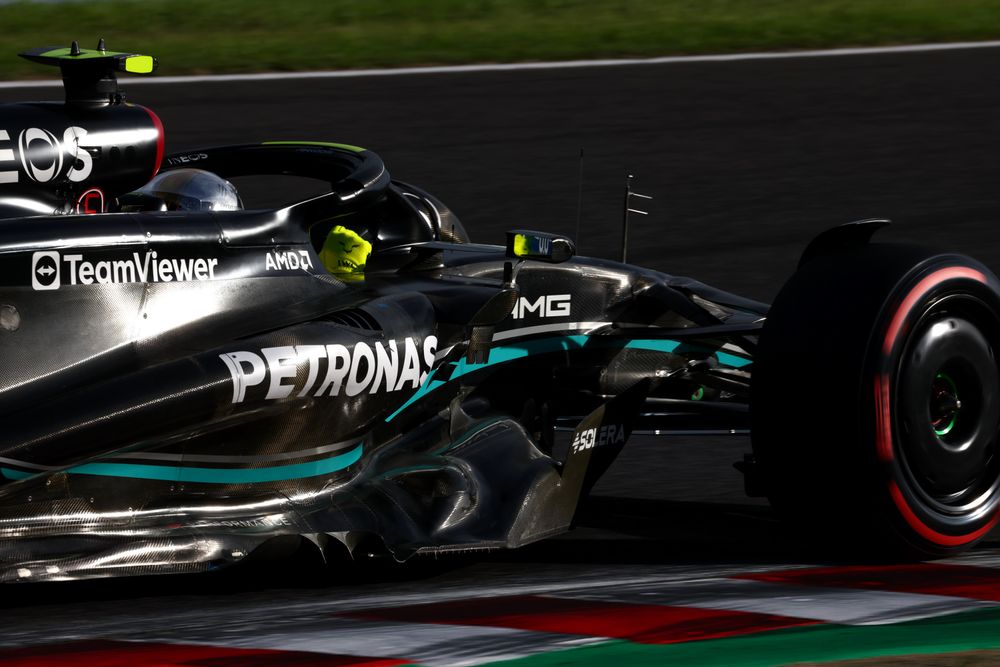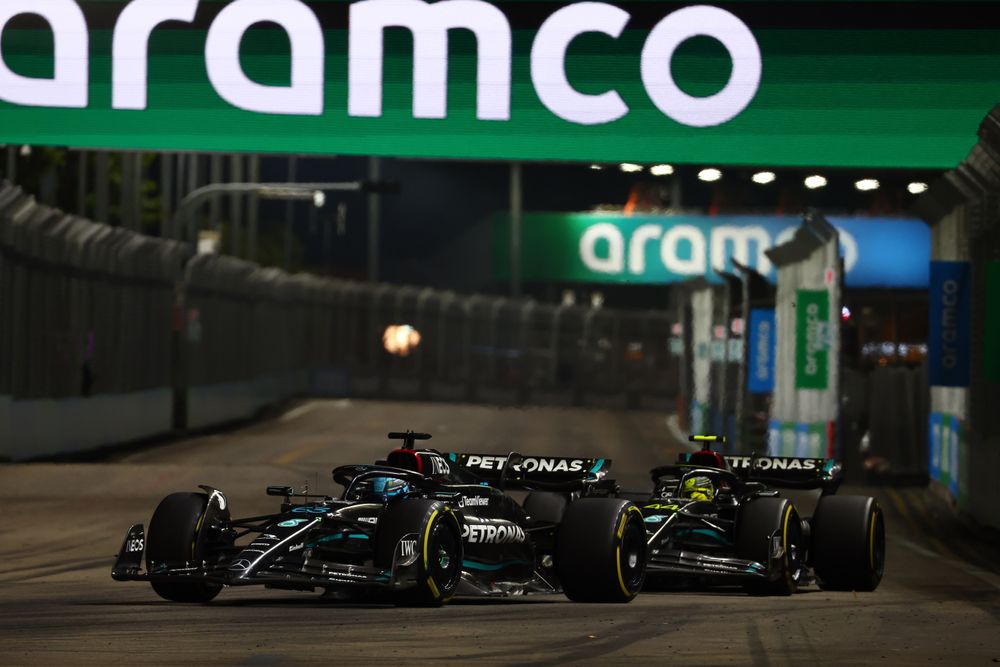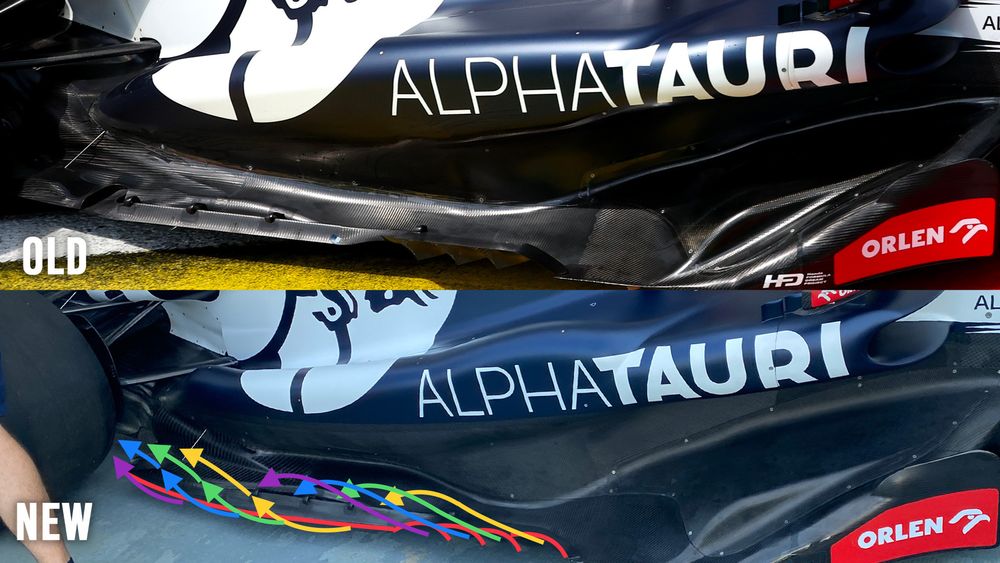Up Next

Since Formula 1 introduced its current ground effect regulations, teams have struggled to produce cars that work well across a wide range of corner types.
Suzuka revealed a major weakness in Mercedes' car concept, one that points to a major reason its car is inconsistent and can’t match the pace of the Red Bull RB19. And it could well be the same in Qatar this weekend.
That’s a warning for Mercedes, because regardless of how much it changes its car next year the first thing it needs to understand is how to produce a car that is able to work at all tracks and in all types of corners. From there on in it's just about improving how competitive it is compared to the opposition.
The week before the Japanese Grand Prix, Mercedes was a victory threat in Singapore with a car that worked well in the short, sharp, slow corners. In terms of qualifying pace, Suzuka was its worst weekend of the season with a one-second disadvantage in qualifying.
That was mostly down to its problems in the faster corners, in particular in the first sector. Lewis Hamilton complained about a strong front end and unstable rear and that even when the car was improved by Saturday afternoon it simply lacked rear downforce.
This is a red flag for me that shows Mercedes doesn’t have the control it needs over the car. It’s not simply about generating more downforce at the rear, it’s instead a matter of how you control that downforce distribution in order to give you a car that works well across a range of corner types.
We often hear drivers talk about the car not having the grip, being too pointy in the fast corners, poor traction, suffering from slow change of direction or too much low-speed understeer.
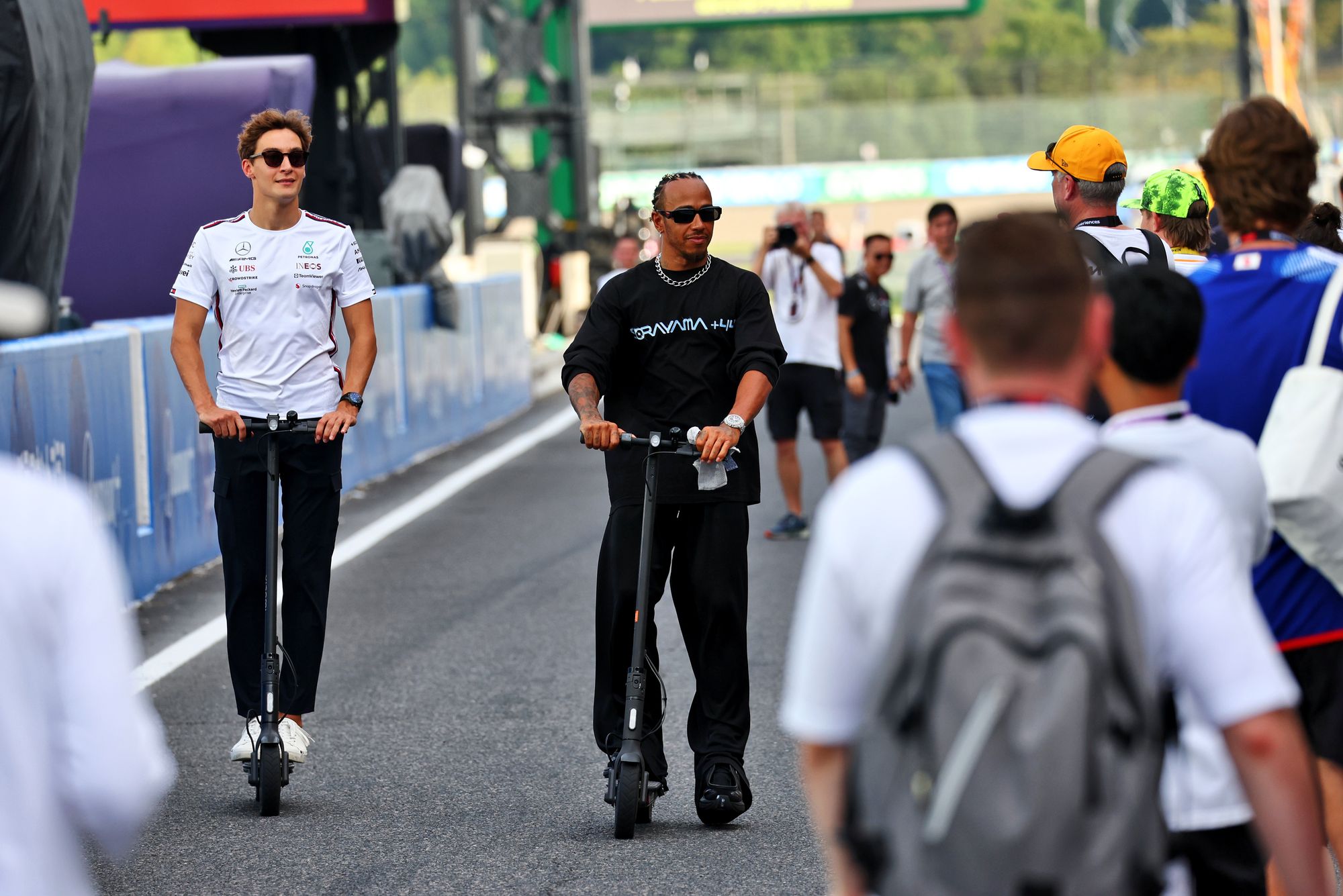
During a race weekend, the team and drivers will work together with the simulation group at the factory and whoever is putting the miles in with the driver-in-the-loop simulator to optimise the set-up.
However there’s limited time to do this and the basic set-up can’t be changed after the car leaves the pits for the first time in qualifying. The whole race weekend is an exercise in dotting the i’s and crossing the t’s in set-up work.
To be really competitive you need to be trying to optimise the set-up around a strong base. If the car’s fundamental characteristics are wrong, you could run the car at the track forever and set-up changes would do nothing more than move the problems around because you wouldn’t be able to eliminate them.
The regulations set the minimum mass at 798kg and also tightly control the weight distribution. The window allowed for tuning is based on a minimum front and/or rear axle weight.
|
Front
|
Rear | Total | |
| Minimum percentage of total |
44.60%
|
53.90% | |
| With minimum front weight |
356kg
|
442kg | 798kg |
| With maximum front weight |
368kg
|
430kg | 798kg |
This means the weight distribution defined by the regulations is between 44.6% and 46.1% front, so a potential variation of 1.5% front. In weight terms, that’s a variation of 12kg that you can vary on the front axle.
The regulated weight distribution was put in place because of Pirelli’s arrival as F1's tyre supplier in 2011. It wanted to minimise the load variation that it was designing its tyres to cope with, but what was initially seen as a short-term measure has stayed in the rules ever since.
Prior to that, weight distribution was open and teams were moving the weight further and further forward. Because of this they were also able to move the aerodynamic centre of pressure further and further forward, which in turn increased the overall downforce levels of the complete car.
I’m sure we all remember cars hanging off a crane very nose down. In this era, we were seeing upwards of 48% front weight distribution, but we don’t see that anymore. Cars now sit reasonably flat or slightly nose up.
Yes, the location of the lifting eye played a role in whether the car will be nose up or nose down, but now even that lifting eye location is fairly well defined.
To understand how different characteristics can alter the way a car that is visually the same as another performs based on the specification of its concept, we can break it down aerodynamically.
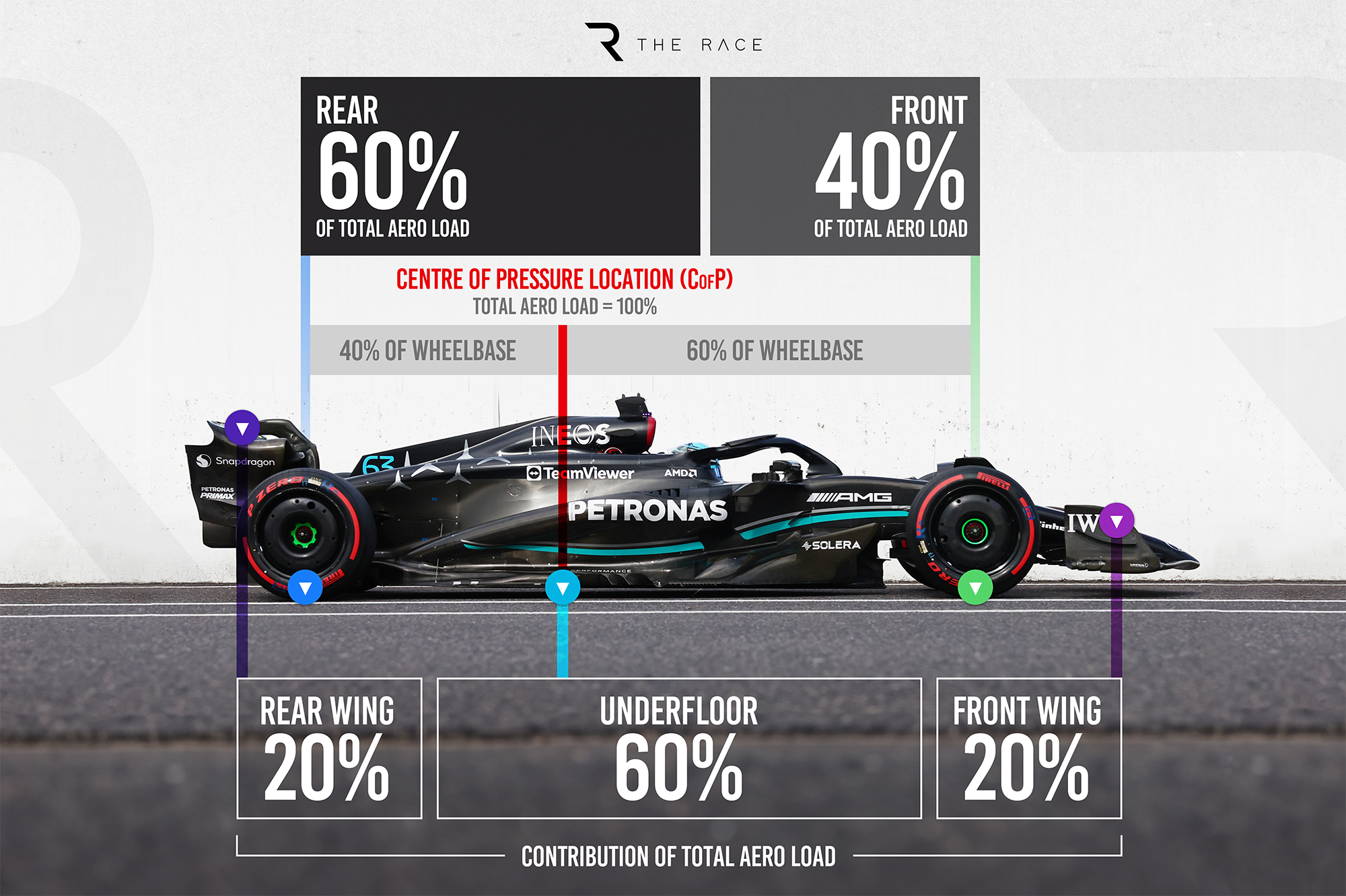
To do this, I have generated some simple numbers to show a very basic car aerodynamic specification. Using those numbers we can understand the handling characteristics I would expect from differing development directions.
This shows that the front and rear wing centre of pressure and the underfloor centre of pressure are all adding up to this single balance location with the aero load distributed at 40% on the front axle and 60% on the rear axle. This is what is called the Centre of Pressure (or CofP=40%F).
For this illustration, we will assume that this is consistent through the cornering speed range and ride height range.
If a car has this aerodynamic distribution, I would expect it to understeer fairly badly in slow corners and potentially oversteer in fast corners. Very seldom will a driver stick with a car that is oversteering in fast corners.
Some can cope with more of it than others and you can get a laptime out of it but the risk level of ending up spinning or worse is increased.
However, understeer is more of a laptime penalty than a small amount of oversteer.
With understeer, you basically have to wait on the front gripping before you can get back on the throttle.
With a small amount of oversteer, you can ride the storm and use it to help rotate the car and hope that the rear grips enough to accept the throttle on corner exit, applying the throttle will give you a small amount of load transfer to the rear, improving rear grip.
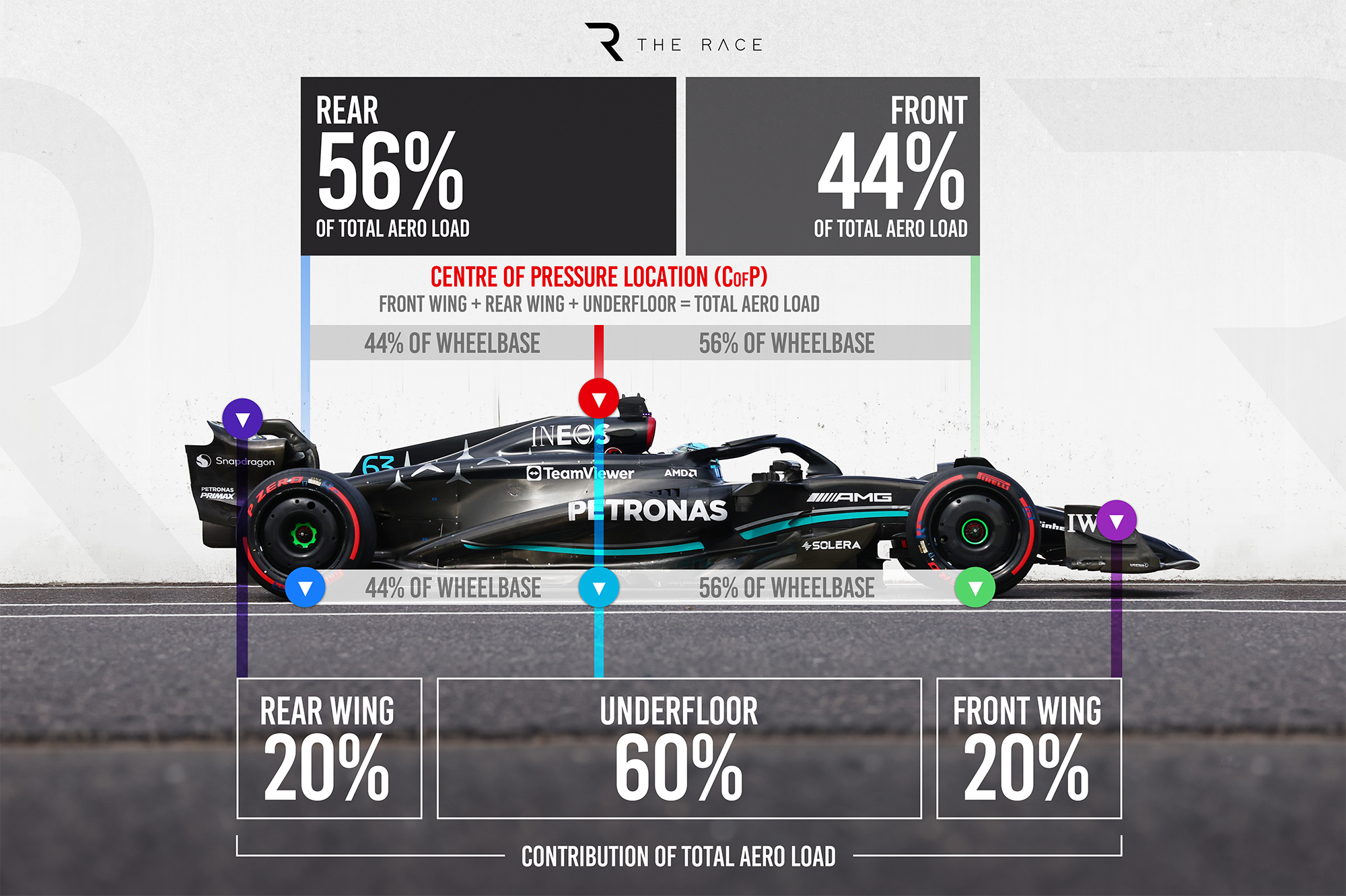
In this second illustration, I have shown some changes to the CofP location, now at CofP=44%F. This puts the aerodynamic load distribution forward - so more in line with the defined weight distribution window.
I have kept the CofP of the wings and the underfloor in the same location. If you had this, you would reduce the slow and medium speed understeer, but increase the nervousness of the rear end on corner entry and high-speed oversteer in general.
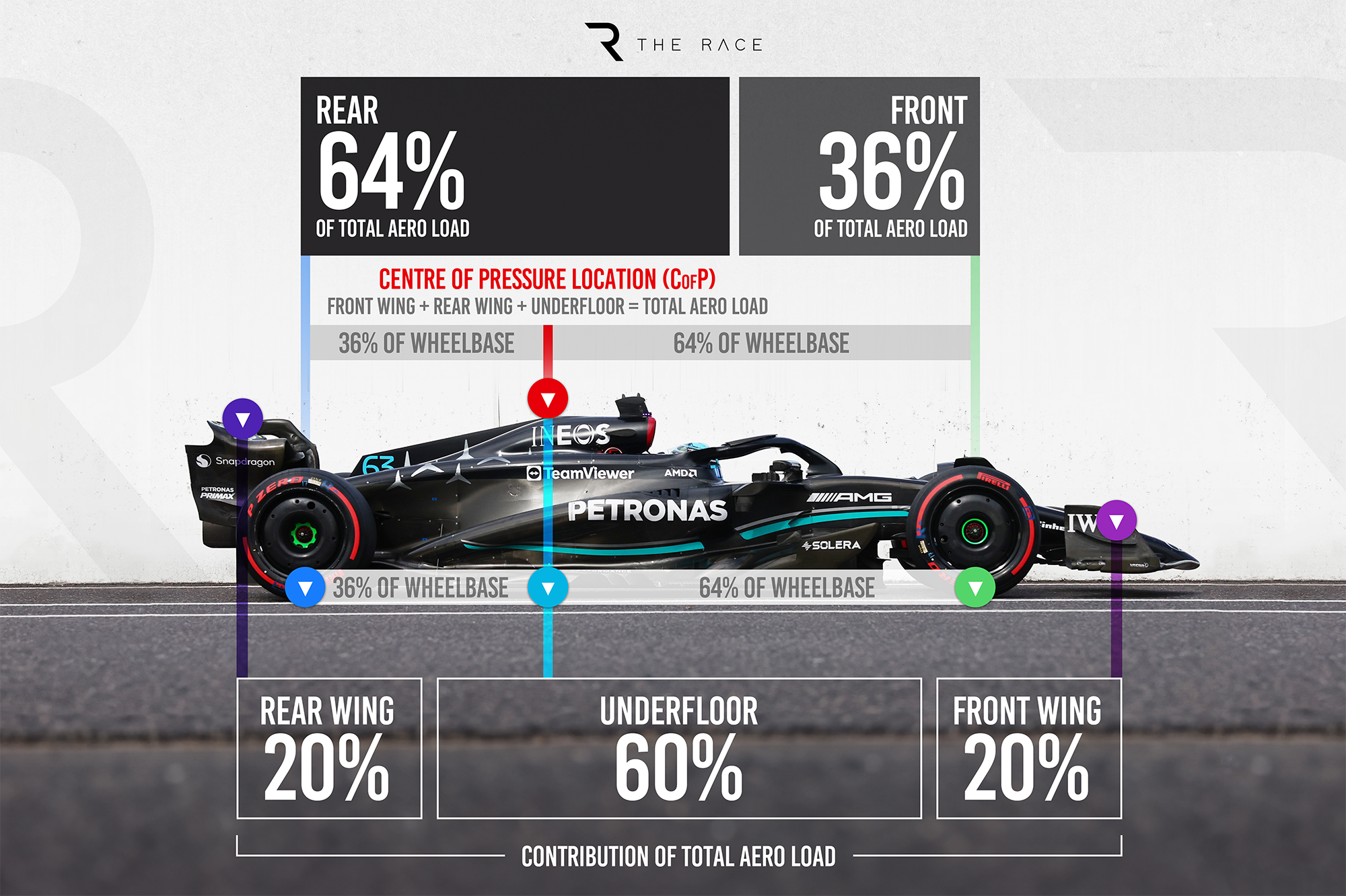
Now the illustration shows the CofP moving rearward to CofP=36%F.
Again, I have kept the CofP of the wings and the underfloor in the same location. With this change it would increase low- and medium-speed understeer. The rear of the car would be much more stable on corner entry, but lead to more understeer in the medium to fast corners.
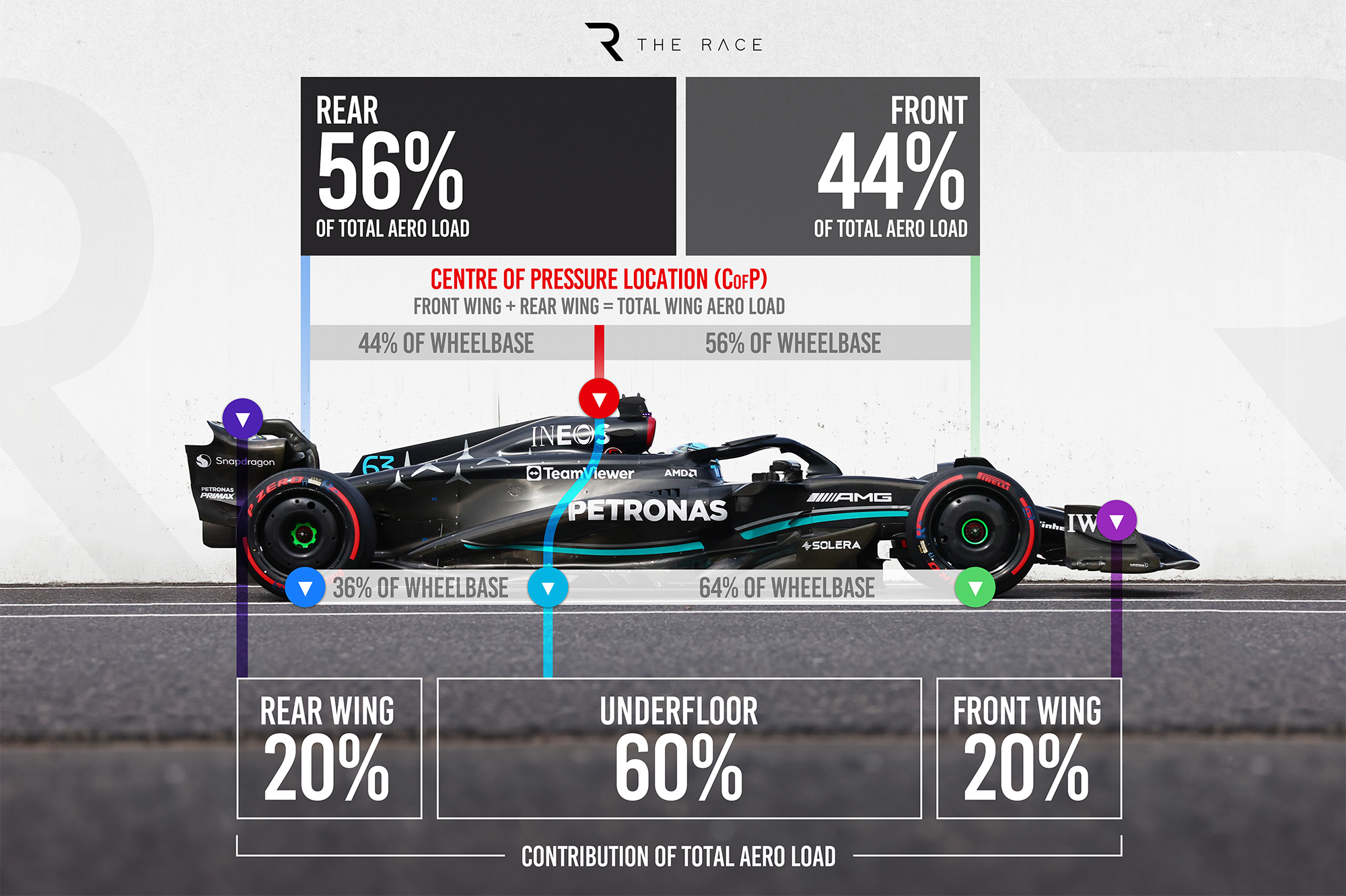
Now I’m getting towards what I would be pushing my aerodynamic team to achieve. The numbers may represent a much bigger spread than what you would want in the end, but the objective is there.
It’s all about using the very powerful diffuser to drag the CofP rearward as the speed increases. This would be CofP=44%F migrating with speed to 36%F.
The underfloor generates somewhere in the region of 60% of the overall downforce, with the other 40% coming from the wings (upper body).
What we need to remember is that 60% will increase as the speed builds up and the underfloor gets nearer to the track surface. As we have seen, the teams spend a huge amount of their development time trying to bridge that gap one way or another.
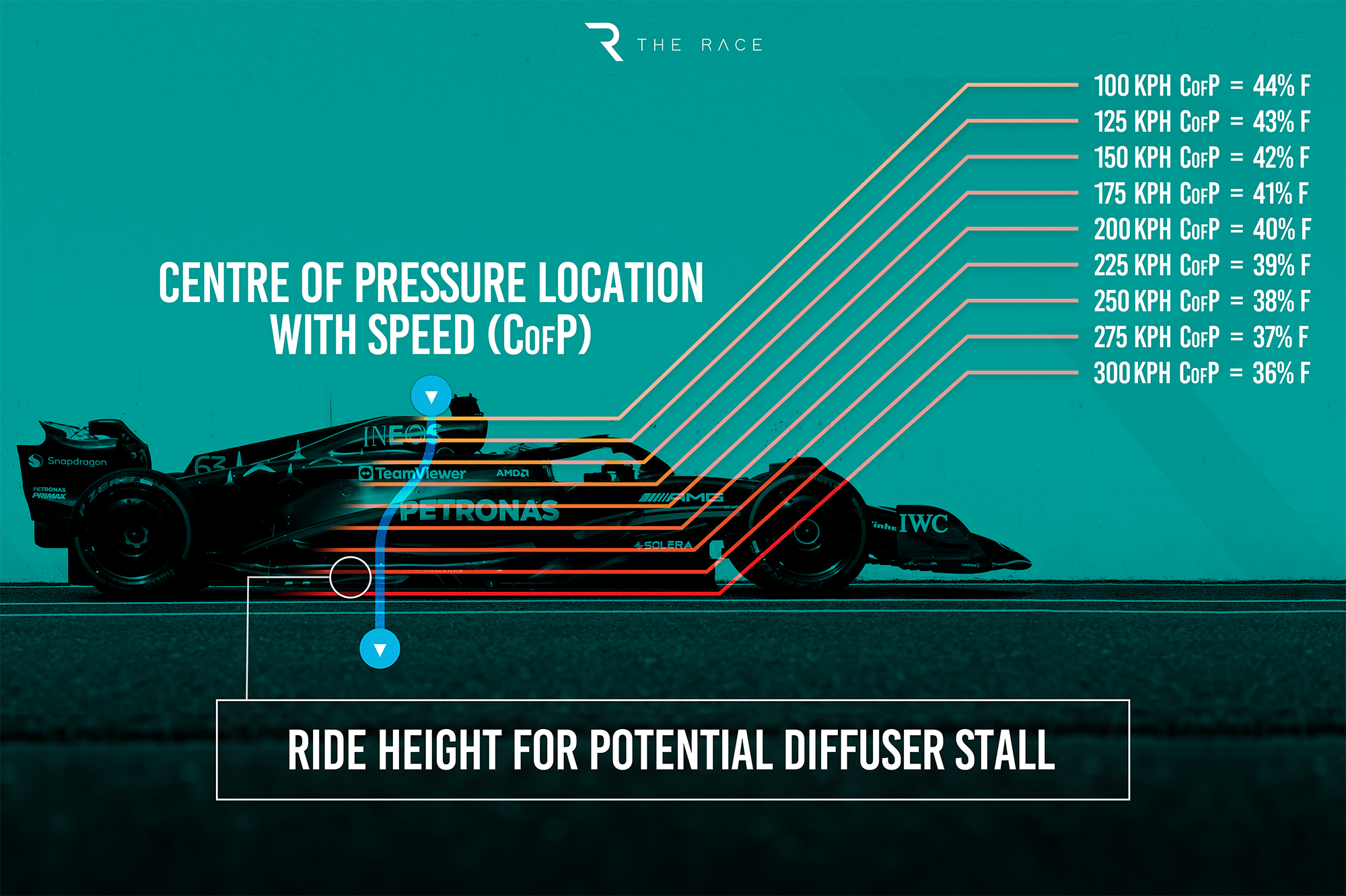
This illustration shows the CofP shift with speed. It’s actually CofP shift with ride height change, but the change in ride height all depends on the vertical stiffness of the front and rear of the car. It will be around 2:1, meaning that the rear lowers by twice as much as the front.
You can also see where the CofP stops going rearward.
That’s where you would try to build in an increasing underfloor/diffuser stall.
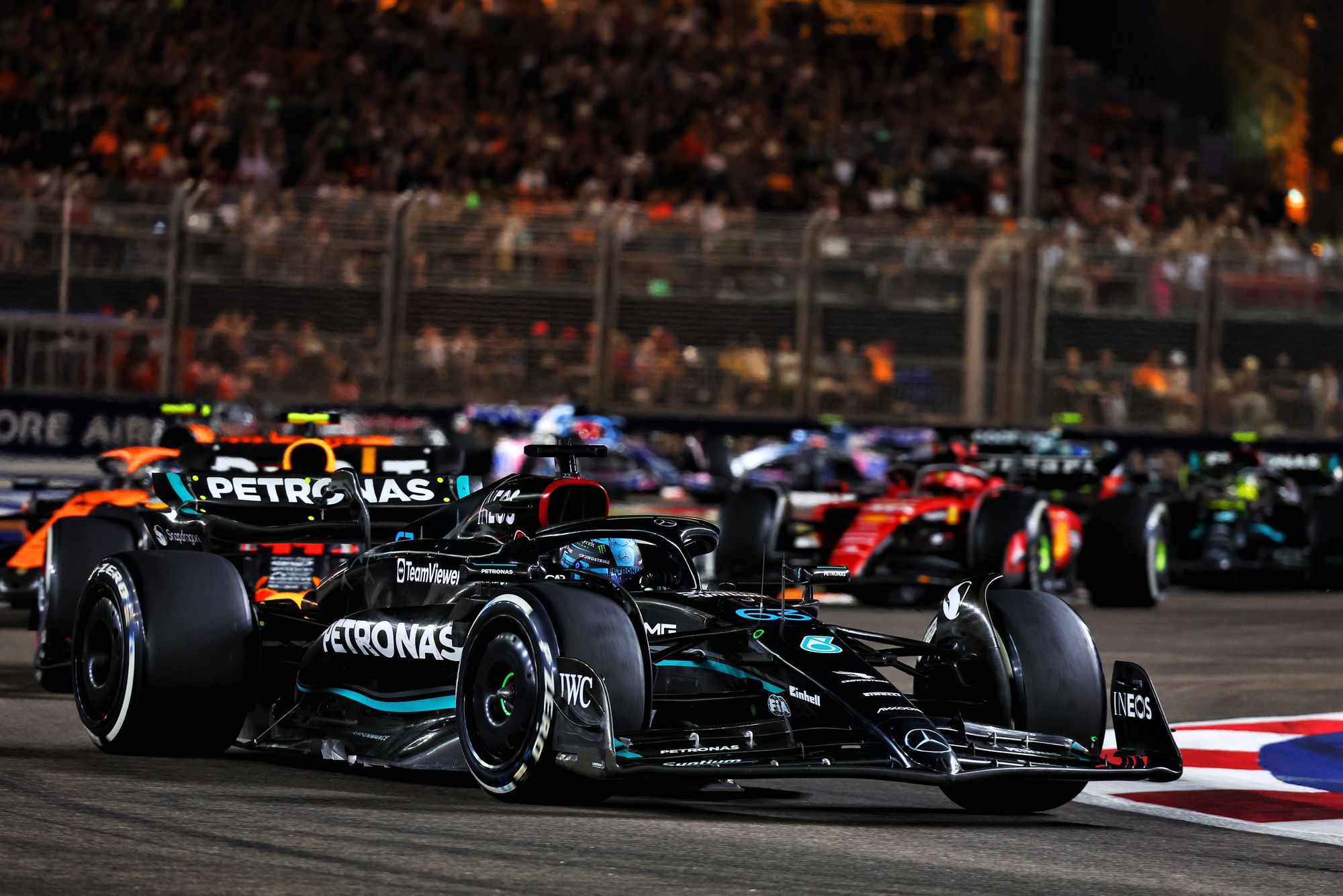
With any aerodynamic surface stall, it’s critical that the actual downforce numbers don’t diminish - they just need to not increase as much. If they do diminish, it will very quickly lead to porpoising and, when it gets out of control, bouncing.
Another plus for this type of aerodynamic CofP rearward shift is the fact that the underfloor/diffuser is much more efficient than the rear wing. This means you can run with less rear wing downforce, which in turn improves top speed.
To complicate things even more, I would also be asking my aerodynamic group to make sure the CofP does not go rearwards with increased steering lock. Zero balance shift, I could live with, but moving a little forward makes much more sense to the driver.
If they have a little understeer and apply more steering lock, then the understeer should reduce. If it moves rearwards, the understeer will increase and that definitely plays with their understanding of the car. However, that’s something to go into detail on another day.
These numbers are simply rounded up and adjusted to let you understand the direction that I would be heading in. For your detailed car specification and the direction you would like your aerodynamic engineers to follow you need much better data.
Every team should have the resources and the people to do this.
But it’s the commitment and ability to pursue something like this that makes one team stand out from another.
For me, the one person who believes fully in his commitments is Adrian Newey. On many occasions, it has taken a few races to get on top of what he believes in but, in the end, he and Red Bull have benefited from that commitment.
That’s the big question for Mercedes.
It has made some progress this year and promises more changes next year, but the question is whether the technical team at Brackley really is on top of how to make this work.

